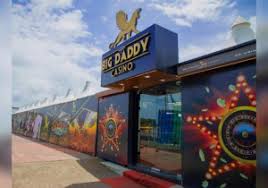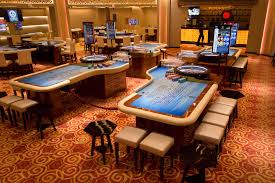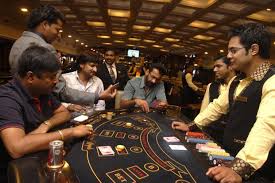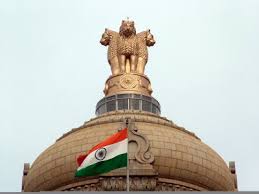
A Guide to Indian Casinos Impact
An Introduction to Indian Casinos and Tribal Sovereignty
The term Indian casino refers to a gambling operation located on tribal land and operated by a federally recognized Native American tribe. These establishments are not merely commercial ventures; they are a direct expression of tribal sovereignty and self-determination. The rise of the Indian casino industry represents one of the most significant economic developments in modern Native American history, transforming the fortunes of many tribes across the United States. Understanding these venues requires looking beyond the slot machines and card tables to the complex legal and cultural framework that supports them.
For centuries, tribal nations faced systematic displacement and economic marginalization. The advent of the Indian casino era, catalyzed by federal legislation in the late 20th century, provided a pathway for many tribes to generate their own revenue and fund essential services. This financial independence has allowed tribes to reinvest in their communities, revitalize their cultures, and assert greater control over their future. A visit to any modern Indian casino often reveals a deep connection to the tribe’s heritage, with architecture, art, and themes that celebrate its unique identity and history.
The operation of an Indian casino is a complex undertaking governed by a unique set of laws that balance tribal, state, and federal interests. These establishments are subject to rigorous regulation and oversight to ensure integrity and fairness. The success of a Indiancasino can vary dramatically, from massive resort destinations that rival Las Vegas to smaller, more modest operations that primarily serve a local community. This guide will delve into the multifaceted world of Indian casinos, exploring their legal basis, cultural importance, economic impact, and what visitors can expect.

The Legal Foundation: The Indian Gaming Regulatory Act of 1988
The cornerstone of the modern Indian casino industry is the Indian Gaming Regulatory Act (IGRA), passed by the U.S. Congress in 1988. Before IGRA, tribal gaming operations existed in a legal gray area, leading to conflicts between tribes and state governments. The IGRA established the federal framework for regulating gaming on tribal lands, creating a clear and structured environment for the industry to grow. This legislation was a pivotal moment that empowered tribes to engage in gaming as a means of economic development.
The IGRA categorizes tribal gaming into three classes. Class I includes traditional social games with minimal prizes, which are exclusively regulated by the tribes themselves. Class II encompasses bingo, pull-tabs, and non-banked card games like poker; these are regulated by the tribes in conjunction with the National Indian Gaming Commission (NIGC). Class III, which includes the most well-known casino games like slot machines, blackjack, roulette, and craps, is the most heavily regulated. To operate a Class III Indian casino, a tribe must negotiate a compact with the state government in which it is located.
These tribal-state compacts are often complex agreements that outline the specific types of games allowed, regulations for operation, and sometimes provisions for revenue sharing with the state. The negotiation process can be lengthy and politically charged, but it is a necessary step for a tribe to launch a full-scale Indian casino. The IGRA’s structure successfully balances tribal sovereignty with state interests, providing a stable legal foundation that has allowed the Indian casino industry to flourish and become a major economic force.
More Than Gaming: The Cultural Significance of Tribal Casinos
While the primary draw for visitors is gaming, an Indian casino often serves as a cultural center and a powerful symbol of tribal resilience. Many tribes intentionally incorporate their heritage into the design and operation of their casinos. From the moment a guest arrives, they might be greeted by stunning architecture inspired by traditional dwellings, magnificent displays of tribal art, and exhibits that educate the public about the tribe’s history and customs. This integration of culture transforms the Indian casino experience into something more meaningful than a typical gambling outing.
The revenue generated from a successful Indian casino frequently funds cultural preservation programs that might otherwise struggle to find financial support. This can include language revitalization initiatives, the creation of tribal museums and cultural centers, and the support of traditional artists and craftspeople. In this way, the modern economic engine of the Indian casino directly contributes to sustaining ancient traditions for future generations. It allows tribes to tell their own stories and celebrate their identity on their own terms.
Furthermore, these establishments often become a major source of tribal pride. They provide employment for tribal members in management and leadership roles, fostering a new generation of business professionals and community leaders. The success of an Indian casino is seen as a success for the entire tribal nation, demonstrating its ability to compete in the modern economy while honoring its past. The cultural significance of an Indian casino is therefore deeply intertwined with its economic and social roles within the community.
Try Online Casino at Pausslot
A Driving Force for Economic Development in Tribal Communities
The most immediate and visible impact of an Indian casino is its ability to generate substantial revenue for the operating tribe. Prior to the gaming era, many reservations suffered from extreme poverty, high unemployment, and a lack of basic infrastructure. The influx of capital from a casino has enabled numerous tribes to fundamentally reverse these conditions. This economic empowerment is the core justification for tribal gaming and represents a dramatic shift in the financial well-being of many Native American communities.
The benefits of this economic development are multifaceted. A successful Indian casino creates hundreds or even thousands of jobs, employing both tribal members and individuals from surrounding non-tribal communities. This reduces reliance on federal assistance and stimulates the local economy. The revenue is also used to build critical infrastructure, including roads, water systems, and housing. Perhaps most importantly, tribes can invest in social services such as healthcare clinics, elderly care programs, and youth centers, significantly improving the quality of life for their citizens.
The financial model of an Indian casino dictates that a significant portion of the net revenue is distributed to the tribal government as a “governmental gaming revenue” payment. This functions similarly to tax revenue for a state or city, funding essential governmental operations like law enforcement, education, and environmental protection. This model of self-generated taxation has allowed tribes to strengthen their sovereign governments and provide for their citizens in ways that were previously impossible, making the Indian casino a powerful tool for nation-building.
Exploring the Game Floor: Popular Offerings at Indian Casinos
The heart of any Indian casino is its gaming floor, which typically offers a wide array of options to suit every type of visitor. The most prominent feature is often the vast sea of slot machines, which range from classic three-reel games to elaborate video slots with immersive themes and progressive jackpots that can reach life-changing sums. The appeal of slots lies in their simplicity and the potential for significant payouts from a small wager, making them the most popular attraction at most Indian casino venues.
For table game enthusiasts, a full-scale Indian casino will offer a comprehensive selection. Blackjack is a perennial favorite, with multiple tables offering various limits to accommodate both casual players and high rollers. Other classic games like roulette, with its iconic spinning wheel, and craps, with its energetic and social atmosphere, are also staples. Many Indian casino locations also feature a poker room, dedicated to Texas Hold’em and other poker variants, where players compete against each other rather than the house.
Beyond these classics, visitors can often find other gaming options. Bingo halls remain a popular and traditional form of gaming, especially at older or smaller Indian casino operations. Some larger resorts may also feature off-track betting (OTB) parlors for wagering on horse and dog races from around the country. The variety and quality of games are constantly evolving as tribes invest in new technology and respond to customer demand, ensuring that the Indian casino gaming experience remains competitive and exciting.

From Slots to Tables: A Look at Casino Games
Delving deeper into the gaming options, slot machines represent the technological forefront of the Indian casino industry. Modern slot machines are sophisticated computers with random number generators (RNGs) that ensure every spin is completely independent and fair. They come in various denominations, allowing players to bet pennies or hundreds of dollars per spin. The themes are incredibly diverse, drawing from popular movies, television shows, mythology, and history, creating an engaging visual and auditory experience for players.
Table games offer a more interactive and strategic form of entertainment. At a blackjack table, players use skill and decision-making to try and beat the dealer’s hand without exceeding 21. The social interaction and application of basic strategy provide a depth that many players find compelling. Similarly, the game of craps involves complex betting options and a lively, communal spirit as players cheer for a common “shooter.” The presence of these games elevates an Indian casino from a simple slot parlor to a comprehensive gaming destination.
Poker holds a special place in the Indian casino ecosystem. As a Class II game, it was one of the first major offerings at many tribal casinos before the widespread adoption of Class III compacts. Poker rooms host daily tournaments and cash games, creating a dedicated community of players. The World Series of Poker Circuit and other major tours often make stops at large Indian casino resorts, drawing professional and amateur players from across the country and cementing the status of these venues as major players in the poker world.
The Resort Experience: Amenities Beyond the Casino Floor
The modern Indian casino has evolved far beyond its gaming roots to become a full-scale entertainment resort. Recognizing the need to attract a broader audience, tribes have invested billions in developing luxury hotels, world-class spas, and state-of-the-art convention centers. These amenities make an Indian casino a destination for more than just gamblers; they appeal to couples seeking a getaway, business travelers attending conferences, and families looking for a variety of entertainment options.
Dining is a major focus, with resorts offering a diverse range of culinary experiences. A typical large Indian casino will feature multiple restaurants, including high-end steakhouses helmed by celebrity chefs, vibrant buffets with international cuisines, casual sports bars, and quick-service cafes. This emphasis on quality food and beverage service enhances the overall guest experience and encourages visitors to stay longer and return more frequently. It transforms the Indian casino into a culinary destination in its own right.
Entertainment is another critical component. Major Indian casino resorts compete to book top-tier musical acts, comedians, and theatrical productions for their performance venues. From legendary rock bands and country music stars to spectacular touring magic shows and tribute bands, the entertainment lineup is a significant draw. Additionally, many resorts feature luxurious pools, nightclubs, and shopping promenades, creating a self-contained vacation environment that offers something for every member of a family or group.
Understanding Tribal Sovereignty and Self-Governance
To fully appreciate the significance of an Indian casino, one must understand the concept of tribal sovereignty. Tribal nations are recognized as domestic dependent nations within the United States, possessing inherent powers of self-government. This means tribes have the right to govern their own territory, create their own laws, and manage their own resources. The operation of an Indian casino is a direct exercise of this sovereign right to generate economic development for the well-being of their citizens.
This sovereignty is why states do not have the authority to simply prohibit gaming on tribal lands. The IGRA created a negotiation process between sovereigns—the tribe and the state—but it did not grant states control over tribal land. The revenue generated by an Indian casino is tribal revenue, not state tax revenue, unless a specific compact agreement includes a revenue-sharing provision. This financial independence is a cornerstone of modern tribal self-sufficiency and a key objective of the Indian casino model.
The decisions on how to allocate Indian casino revenue are made by the tribal government, which is elected by and accountable to its tribal members. This democratic process ensures that the funds are used in accordance with the community’s priorities, whether for education, healthcare, housing, or per-capita payments to individual members. The ability to make these decisions without external interference is a powerful manifestation of self-governance and a direct benefit of a successful Indian casino enterprise.
The Regulatory Framework: Ensuring Fairness and Integrity
The integrity of gaming operations is paramount to the success and legitimacy of the Indian casino industry. To maintain public trust, a robust three-tiered regulatory system is in place. At the federal level, the National Indian Gaming Commission (NIGC) oversees the industry, ensuring compliance with the IGRA, auditing tribal gaming operations, and reviewing management contracts. The NIGC provides a crucial layer of federal oversight to protect both tribal interests and the gaming public.
The second tier of regulation is the tribal gaming agency. Each tribe that operates an Indian casino must establish its own independent regulatory body. This agency is responsible for the day-to-day regulation of the casino, including licensing all employees and vendors, investigating background checks, approving games for play, and ensuring that all gaming equipment functions fairly and randomly. The tribal regulators are on the front lines, maintaining the integrity of the games on the floor.
The third tier involves state oversight, which is defined by the tribal-state compact for Class III gaming. State gaming agencies may have a role in ensuring that the games offered comply with the compact’s terms. Additionally, all Class III gaming equipment, such as slot machines and video poker terminals, must be tested and certified by independent, state-approved testing laboratories to verify that their software is fair and operates as advertised. This multi-layered system provides strong assurances that every Indian casino operates with honesty and transparency.

Debates and Controversies Surrounding Indian Casinos
Despite their significant benefits, the expansion of the Indian casino industry has not been without controversy. One of the most common debates involves the location of casinos, particularly when a tribe seeks to build a facility on newly acquired land that is far from its traditional reservation and close to a major urban area. These “off-reservation” casino proposals often face strong opposition from local communities and competing commercial gaming interests, leading to complex legal and political battles.
Another area of debate concerns the distribution of gaming revenues. While some tribes have achieved remarkable prosperity, the economic benefits of gaming have not been evenly distributed across Indian Country. Some tribes, due to remote location or small population, operate casinos that generate only modest revenues. Furthermore, the issue of per-capita payments—direct distributions of gaming profits to individual tribal members—can sometimes lead to internal community discussions about the best use of collective resources for long-term stability.
Critics have also raised concerns about potential negative social impacts, such as problem gambling and increased traffic, associated with a nearby Indian casino. Tribes take these concerns seriously and, as part of their compacts and their own commitment to social responsibility, almost universally fund programs for problem gambling prevention and treatment. They also work closely with local governments to mitigate infrastructure impacts. These ongoing debates highlight the complex balance tribes must strike between economic opportunity and their responsibilities as community leaders.
The Future of Indian Casinos: Trends and Challenges
The Indian casino industry is dynamic and continuously adapting to a changing market. One of the biggest future trends is the expansion into online gaming. As more states legalize online sports betting and iGaming, tribes are strategically positioning themselves to participate in this digital frontier. Many tribal-state compacts are being renegotiated to include provisions for online operations, ensuring that tribes can protect their gaming exclusivity and revenue streams in the evolving technological landscape.
Another significant trend is the shift towards non-gaming amenities to drive revenue. As market saturation occurs in some regions, simply having a casino is no longer enough to guarantee success. The most forward-thinking Indian casino resorts are investing heavily in becoming full-scale entertainment destinations, with world-class golf courses, luxury retail shopping, and unique family attractions like water parks. This diversification helps attract a wider demographic and makes the resort less reliant on gaming revenue alone.
Looking ahead, Indian casino operators face several challenges, including increased competition from commercial casinos and potential economic downturns. Furthermore, the next generation of tribal leadership may have different priorities for economic development. The continued success of the Indian casino model will depend on strategic planning, smart investment, and an unwavering commitment to the core mission of using gaming as a tool for tribal community development and the strengthening of tribal sovereignty for generations to come.



